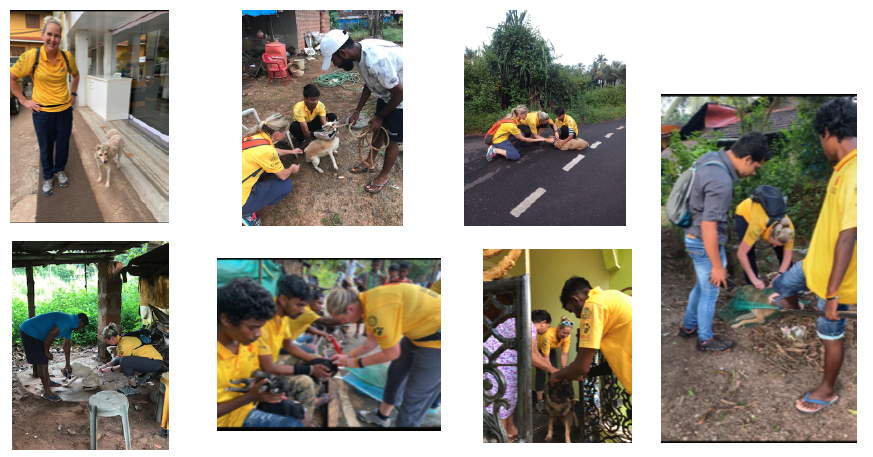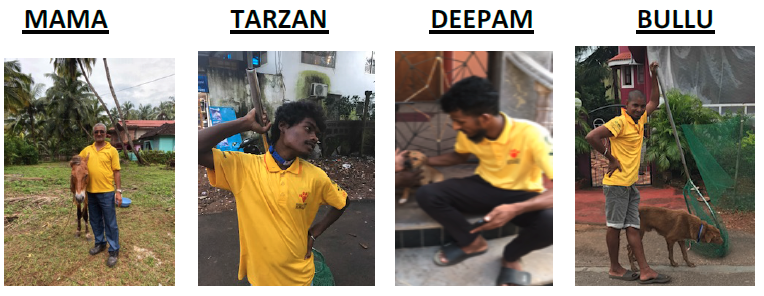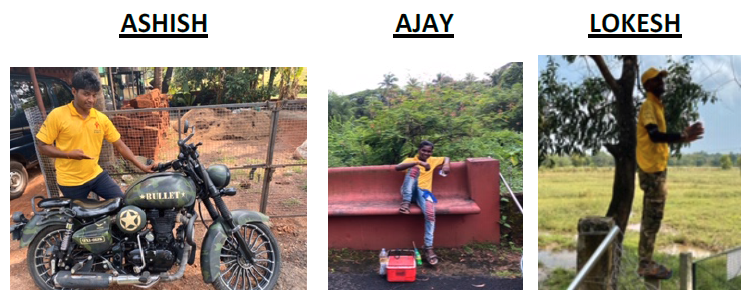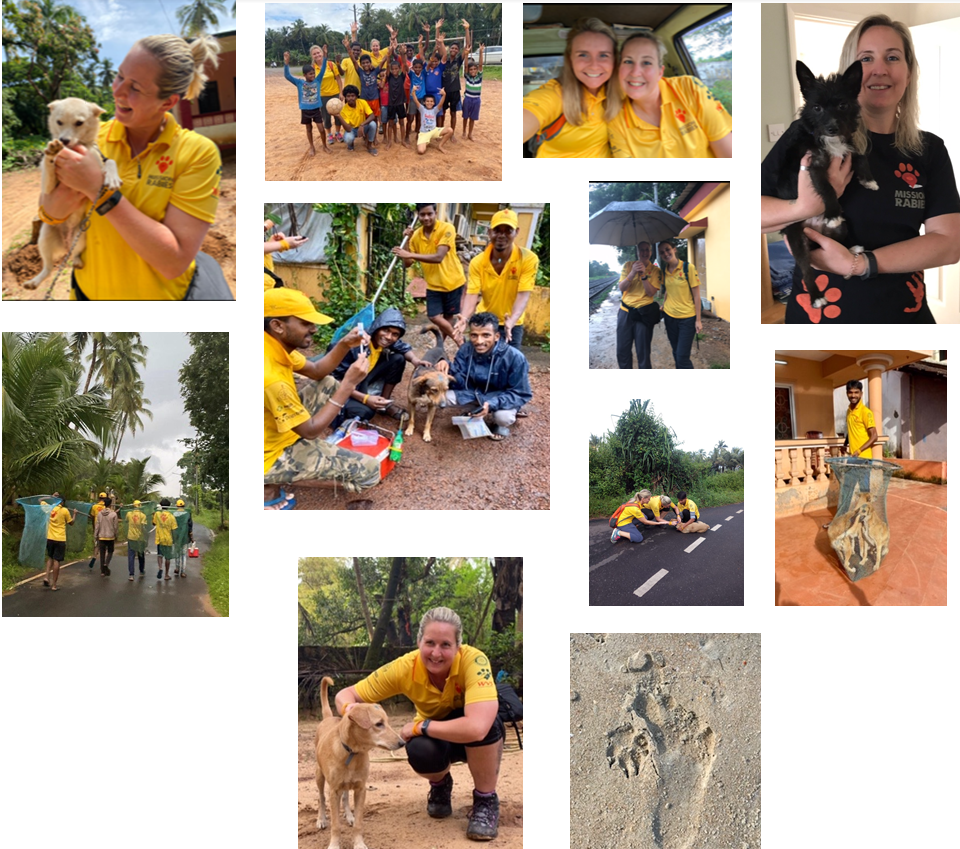My story begins with The Wheelhouse Veterinary Centre asking for a volunteer to help them raise awareness of the charity Mission Rabies. I jumped at the opportunity and was accepted to join the Mission Rabies team in Sri Lanka.
Sadly due to the tragic events that took place on Easter Sunday, the project was withdrawn. My determination to join an expedition meant the months following contained a range of exciting fundraising activities and I was prepared, ready for when a position became vacant in Goa. Every year Goa has a ‘mass drive’ where volunteers come to join the teams already working with Mission Rabies to vaccinate as many dogs as possible in 4 weeks.

Mission Rabies was a project started by the charity WVS (Worldwide Veterinary Service) in 2013. Their goal to eliminate dog bite transmitted rabies through a research driven one health approach. 6 years on from the first project being set up in India, Mission Rabies now has projects running in 8 different countries, providing education, vaccinations, research and technology. In 2015 Mission Rabies became a registered charity in its own right.
Helena (Operational logistics Support Officer for MR), Amy (International Projects Officer for MR) and Project Manager Julie. Together they talked us through the jaw dropping health and safety points to consider, most importantly what to do should we get bitten.
The shocking statistics show that 60,000 people across the world suffer and die from Rabies every year. 99% of these cases are caused by dog bites and most of these are children under the age of 15. This means that every day 100 children die from Rabies. I found it disturbing to think of little children innocently playing with puppies and getting bitten.
There is no cure for Rabies once symptoms develop. This was constantly on my mind as I interacted with families and children over the 2 weeks. Rabies is preventable if all the appropriate post-exposure treatment is received.
I realised the importance and responsibility of staying safe. Kisses from infected puppies into cuts, even small cat scratches qualified for a trip to the hospital for a top up vaccine. The virus is transported from saliva to blood so any broken skin was a risk.
We learnt about the symptoms and behaviours displayed by dogs with Rabies. All dogs that are caught who have Rabies are humanly euthanised, however the chance of us finding one is so low because of the statistics from the success of the vaccination drives.
Since Mission Rabies started the project in India, the reported cases of death from the virus in Goa have dramatically declined:
- 17 reported deaths in 2014
- 5 reported deaths in 2015
- 1 reported death in 2016
- There have been no Rabies deaths in Goa since the start of 2018!
Our home base was in Benaulim with the project reaching out to the surrounding areas. In total, there were 12 volunteers including vets and vet nurses from England, Ireland, Wales, America and Canada. Only one volunteer didn’t have any veterinary training. This is not a requirement to volunteer as data collection is of huge importance when out administering the vaccinations. Being such a small and special team, everyone is of equal importance. We were divided into smaller groups. Myself and Mary joined team Python, the elite net catchers!



Our daily routine for the next 2 weeks was as follows:
6:20am we meet the teams and convoy off in vans and scooters to our allocated areas.
Work till 9:00am then stop for experimental breakfast, top favourites on the menu included Samosas, Sweet buns, Bhaji’s and Dosa’s, all served with ketchup!
Back to work from 9:30am to 11:30am.
12:00-2:00pm was rest time spent rehydrating with salt lime sodas (the ultimate recommendation from a previous volunteer) and hand washing of yellow shirts ready for the next day.
All the teams meet together for lunch, before heading back to work until 6:00pm.
Dinner at 7:00pm was a great time of day when all the volunteers shared stories from their day’s activities. The most exciting part was hearing about any rescues that had taken place, the most
common of these being dogs rescued from wells and strays being taken to the vets for treatment for fly strike.
We averaged about 10 miles of walking each day. Each area has 3 teams who visit over the course of the vaccine drive. The hand catchers go in first. They have no nets so are responsible for vaccinating the friendly,
approachable dogs. We spent a day with the awesome hand catching team, Pankaj and Praveen. Next, a team goes from door to door to use their nets to restrain the aggressive and nervous dogs and catch strays as they pass. Then finally, the net catchers pass through who are responsible for targeting any strays that weren’t caught and vaccinated by the other teams. Following a vaccination, each dog has a dab of paint put on their forehead. This is so it can be seen from a distance that they have received a vaccine.

Data collection involves completing an app on the team leaders mobile and each owned dog was given a vaccination certificate too. The app collects further information about each vaccinated dog including; gender, neutered, stray or owned, previous vaccination record, roamer, owner name and phone number. Each team is given a mapped area to walk and complete, which is then followed and tracked on a google map style satellite following the blue spot. Once an area is completed a new map is sent to the team.
The teams like to compete to get the highest scores for vaccines given. It brings a great fun incentive to their work. Caps are awarded to and worn by the team with the highest amount of catches. Special awards are given out individually to team members exceeding what is expected of them. The boys are aged from late teens in to their 20’s and from different areas of the country so they don’t all speak same language. Learning to interact with the boys was great fun. We interacted by playing games like ‘heads up’ on our phones, whilst waiting for storms to pass. Mary and I were making great progress learning names and basic Hindi words. Kutha is Hindi for dog and our most used spoken Hindi was “Challo Challo”, meaning "let’s go!!"
The boys are so skilled with catching and understanding dog’s behaviour that it was easy to trust them and have confidence even around the nervous and scared dogs. The boys favourite is finding puppies! They will crawl and clamber into/over anything to check for puppies. Any area not safe for Mary or myself to enter then they would give the vaccine for us. It is obvious these boys are excellent at their jobs and show no fear when it comes to the welfare of a dog.
The boys were always up for challenges. Work would often pause from walking whilst they fixed fallen cables, umbrellas and even Bullu’s net which he managed to snap! With all the singing and banter our team had fun and sometimes forgot about any language barrier.
The teams work through all weather! Due to global warming the monsoon season now lasts an extra month which meant the rain kept coming. Mama (meaning uncle, our highly respected driver) kept a spare supply of rain jackets and umbrellas in the van.
On our last day of work a cyclone hit. Unfortunately work was cancelled for safety reasons, however this meant the lunchtime party was extended! There were a few late arrivals from the boys, who had gone to help Julie as a Mango Tree had fallen on her house! Games were played and awards presented during the lunch.
Lots of vaccines were given to all sizes, ages and breeds of dog. If I was to be a dog living in Goa I would definitely want to be a Beach dog! They are super friendly and usually in good health as all the tourists feed them. However they are very difficult to catch to vaccinate. The trick is to slowly make friends and build their trust using food for treats. If they see a net they run and there is no amount of skill that can out run the dogs, particularly when they can run in every direction.
Dogs are treated very differently in India and by day 8 of work I was feeling emotionally challenged by many of the unhealthy, emaciated, starving and dehydrated states of animals I was seeing. Mange, fly strike and open wounds were common health concerns we came across.


As we walked we found dogs in a variety of different locations from beaches to residential streets to fields and poverty areas. Some homes were painted beautiful bright colours and looked like Disney castles. This sharply contrasted other homes in the slums of a shack or shelter made from tarpaulin. Many of the ‘pet’ dogs we came across were chained up and it was a common sight to see people holding a stick ready to beat the dog to stop it from barking.
Mentally, I had tried to prepare myself for visiting India knowing that dogs are not treated as family members like in my home country. I had many moments of battling with my conscience. I was there to help and make a difference but it was unnatural for me turn and walk away from animals that were suffering. I felt it was important to try and make unjudgemental observations. It was also very important to understand what Mission Rabies is and why I was there. The project must stay focused on primarily vaccinating. Any stray that was injured or needed medical attention was always transported to the vet but it is the responsibility of the owner to seek medical treatment for their own dog. Experiencing owners who choose not to do that is a very different world to what I am used to. Understanding the project and sticking to the mission was an important objective. “We can’t change everything but lots of small changes can make the big changes happen.”
It was so lovely on the occasions we vaccinated dogs who clearly had a loving, affectionate and non fearful relationship with their owners. All members of the different communities are used to seeing the yellow Mission Rabies shirts and know about the projects. Many came out of their houses just to say hello and ask where we were from.
It was very rewarding to have these interactions. Sadly, on the afternoon of day 9 I came across a heart-breaking sight, where I saw a puppy cuddling onto its dead sibling. It is estimated puppies only have a 20% survival rate. Sadly statistics have shown that 67% of puppies die under the age of 4 months and 82% die within the age of a year. The total amount of dogs vaccinated on this year’s mass drive in Goa was a staggering 12000! Joining this expedition, learning about the phenomenal developing success Mission Rabies is achieving and experiencing a different country and culture has been an emotional; amazing, rewarding, inspirational, educational and powerful experience for me.
I would like to the thank The Wheelhouse Veterinary Team for assisting me with the opportunity.
